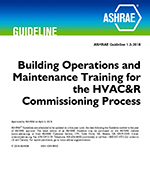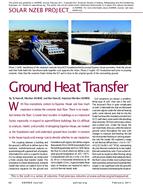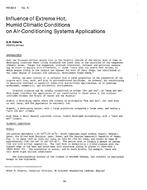It is hard to treat the subject of air distribution of a variable air volume system without getting quickly involved with the system itself. But distribution is the subject of this paper and not the VAV system, per se.
With any type of system, an air outlet or diffuser is the only contact most occupants of air conditioned spaces ever have with their system. It can be blamed for being too conspicuous, (even ugly), for making too much noise, for causing drafts, for feeling too hot or too cold, and even for not relieving stuffiness or odors. Actually an air outlet is responsible to four of our five senses, missing only smell, so it should not be taken lightly. Yet seldom is it praised for doing its job well. When it is unnoticed, then it is part of a good installation.
What makes the air diffuser an item of discussion today? Simply that the greatest problem with variable air volume was traditionally the air diffusion. At reduced rates of air flow it literally fell on its face. It was not supposed to be flexible enough in selection range to be satisfactory, both at maximum flow and at minimum. If balanced for comfort at one load condition, a change in loading could cause it to be unbalanced to the point of dropping cold air in the middle of a room, or not throw to the end of it. This is the problem of VAV air diffusion. What are the solutions?
To answer this question, let us look at four general methods of air diffusion used in VAV systems (Fig. 1).
Citation: Symposium, ASHRAE Transactions, Volume 80, Part 1, Los Angeles, CA
Product Details
- Published:
- 1974
- Number of Pages:
- 5
- File Size:
- 1 file , 430 KB
- Product Code(s):
- D-LA-74-11-3


